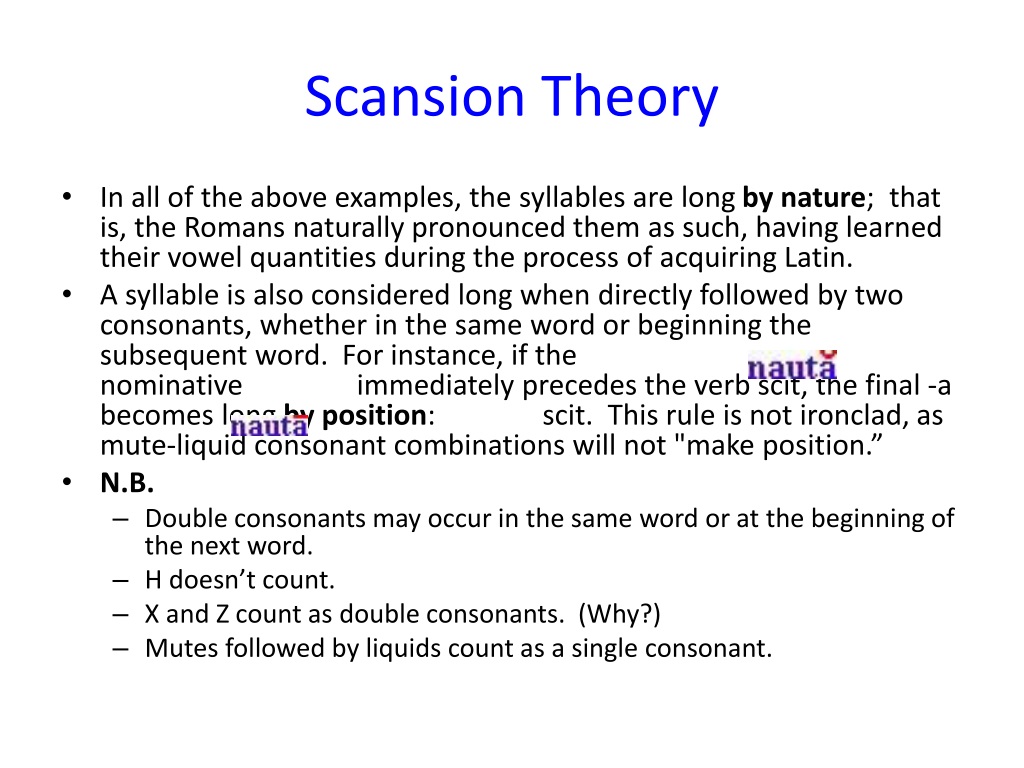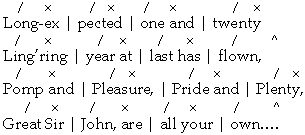

These differences are often deliberate and can be used by the writer to create different meanings in a poem. In English poetry, they are based on the different levels of stress placed on each syllable. Look out for differences in the metre of different lines. A line of iambic pentameter has five feet (five units) of iambs in it. E.g.: ‘If mus/ic be/the food/of love/play on’ (1) (2) (3) (4) (5) BUT REMEMBER(!): A poem’s metre may not be the same on every line (it would be very boring if it were!). The most commonly known rhythm and metre is iambic pentameter.

E.g.: Linda Find the Table Why do So a line of trochaic poetry might look like this: How do farmers know the cows are dirty (The rhythm in each line sounds like tum-te/ tum-te/ tum-te/ tum-te/ tum-te ) When you have worked out the rhythm and the metre of a poem, you stick them together. It is a stressed beat followed by an unstressed beat. ganized rhythms of poetry, scansion, has been pretty much abandoned. E.g.: I think The car A goat Le anne So a line of iambic poetry might look like this: A dog went to the park to see his friend (The rhythm in each line sounds like te- tum/ te- tum/ te- tum/ te- tum/ te- tum ) A trochee is the exact opposite. Iambs and Trochees. An iamb is an unstressed beat followed by a stressed beat. There are 2 main types to learn at A-Level. The analysis of the metrical patterns of a poem by organizing its lines into feet of stressed and unstressed syllables and showing the major pauses, if any. To work out the rhythm of a line of poetry, you look at each ‘foot’ and see what kind of rhythm it uses. If it is made up of five feet, it is written in pentameter. For example, if the line is made up of four feet, it is written in tetrameter. To work out the metre of a line, you count the number of feet in that line. A line of poetry is made of units of rhythm. In fact, it’s arguably the most famous data viz system in English literature today. You don’t have to talk about it, but it can make you aware of hidden meanings in a poem and can help you access the higher grade boundaries. Scansion is essentially a method for data visualization, just like a map or a pie chart it’s a graphical representation of the phonemic data that a poetry scholar locates within a poet’s words. From long to long in solemn sort Slow spondee stalks strong foot yet ill able Ever to come up with Dactyl trisyllable.

Then add the scansion marks above each line by hand or with a keyboard using the keys for accent. Samuel Taylor Coleridge Metrical Feet: Lessons for a Boy Trochee trips from long to short. Scansion is the analysis of a poem’s rhythm and metre. To notate the scansion of a poem, first doublespace the poem.


 0 kommentar(er)
0 kommentar(er)
